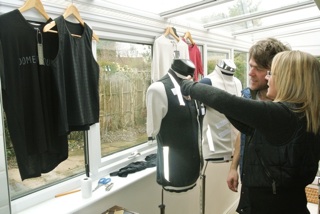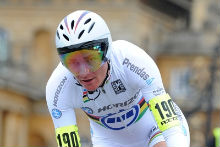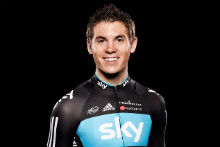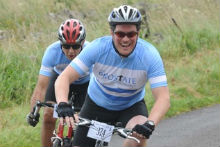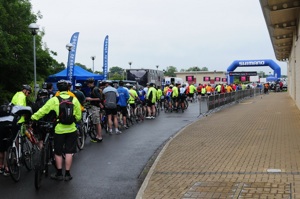
The five-day Virgin Money Cyclone includes a host of events from a family-oriented fun ride to the Beaumont Trophy, a race on British Cycling’s Premier Calendar.
At the heart of the event is the Cyclone Challenge, which offers routes of 33, 63, and 104 miles. More than 4,000 people took part last year.
We spoke to Peter Harrison, organiser of the Cyclone, and asked for his views on the sportive phenomenon. Peter is the chairman of the Gosforth Road Club and worked in the bicycle industry for 20 years. He has organised professional races, and worked at world cup and world championship events.
What makes a great sportive?
“It’s about making an event accessible to all. It has to be safe, with good risk assessments, and supported by the community. We have four timing stations so we know where every rider is and that every rider makes it back. You need ‘sag’ wagons and complete coverage from the ambulance. We do a sign on the night before for people want it.”
What is the driving force behind the massive growth in popularity of sportives?
“For club guys, it’s an opportunity for the ‘wannabe racers’. I don’t mean that sarcastically. They can come and have a go and it gives them a bit of a challenge, but there’s the safety net of technical and medical back up. People like being part of an event. People do the Great North Run because they want to be part of it.
“There’s another group of people who will have seen road races and thought, ‘I could never do that.’ As the chairman of Gosforth Road Club, people write to me ask, ‘Will I be good enough to do your club run?’ and that’s pretty sedate. People think with a sportive they can take as long as they like. They want to take part, but they don’t want to race. That’s why Brendan Foster gets 54,000 people at the Great North Run.”
What advice do you have for someone competing in their first sportive in 2012?
“Don’t bite off more than you can chew. If you’re only riding five miles a day, three times a week, don’t think you can go off a do a route of 100 miles. You’ll destroy yourself and it will put you off cycling.”
What will be the next stage in the development of sportives?
“I think the market has reached saturation point and that some people are jumping on the band wagon. The good events will continue to grow in stature. We work with communities and charities so there’s a ‘feel good factor’ beyond those taking part in the ride. Last year people rode on behalf of 291 charities. We probably raised half-a-million pounds.”
What’s the most inspiring comment you’ve heard from a rider taking part in your event?
“One of the most inspiring comments came in an email. It almost brought tears to my eyes. It was a guy who said: ‘Peter, I want to thank you for saving my life.’ Five years ago, his marriage had broken up, and he was drinking and smoking heavily. He said: ‘The first year I did the 36-miler and it nearly killed me. Now I’m doing the 100-miles and it’s changed my life.’ That made me feel pretty good.”

